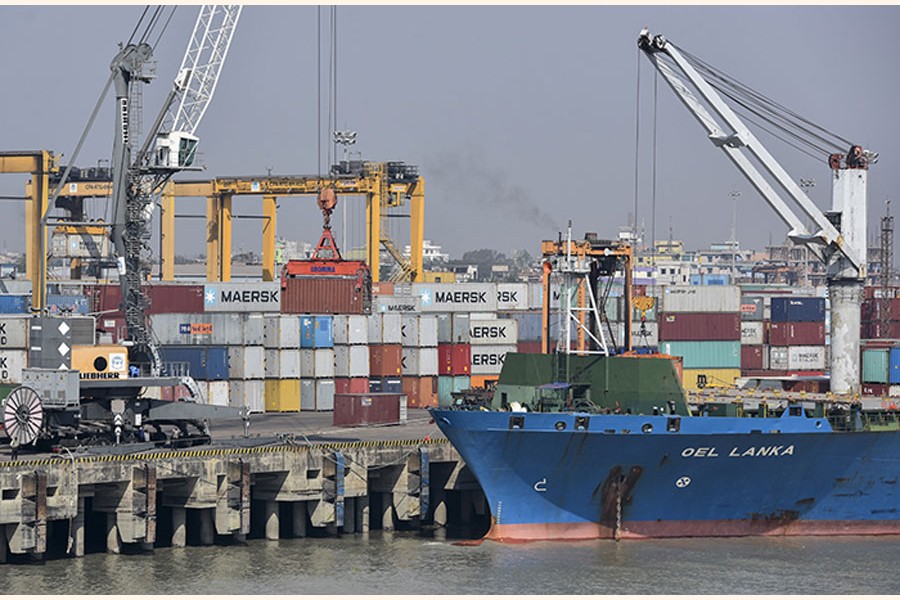Political willingness of the governments can significantly contribute to the inclusive growth in South Asia. Strong regional connectivity is central in ensuring food security, job creation, better nutrition, education, skill development, and sanitation. Significant imbalance of power among nations is pre-dominant in this region. For example, India is the dominant economy in this region, creating suspicion and mistrust amongst the other countries of this region and retarding cooperation amongst the members. In SAARC, this process resulted in many distortions such as avoiding the trade with India, discouraging FDI from India, unwillingness to work together to resolve regional issues, externalising bilateral trade, and regional issues (Source: ADB, ADB Working Paper Series on Regional Economic Integration, The Political Economy of Regional Cooperation in South Asia (July 2010). The South Asian region is known for high trade costs. The trade cost is usually around 114 per cent of export goods value (UNESCAP. 2017). Whereas, South Asian countries' trade cost with the U.S. is 109 per cent despite of the distance between them and the U.S. Trade between Member States has become more expensive and less competitive compared to trade costs with distant partners.
Further, intra-regional trade in the ASEAN is 40 per cent lower than intra-SAARC trade costs. The lack of fast-track land transportation service is one of the aggravating factors increasing trade costs in this region. Another important factor is the trade disproportion between India and other smaller SAARC countries. These countries find it difficult to supply the products that would be of interest to India's market economy. The non-tariff barriers created by India including SPS, TBT and Anti-dumping measures are often blamed for other countries' poor export performance with India. Furthermore, the productive capacities of the smaller SAARC countries have significantly declined because of the technical complexities and variety in comparison with the global market
Continuity of these factors may significantly hinder regional cooperation and economic integration. This is mainly because the main purpose of cooperation and regional integration is to align the economic structures of the member states, which would, in turn, result in further interdependence with India. Due to the fear and mistrust about India, the smaller SAARC countries will carry out business very cautiously when it comes to India. TN Srinivasan of Yale University observed (Year) that both India and Pakistan were trading heavily with the UAE but were practically avoiding each other. Regional trade by India and Pakistan with other SAARC member countries is also very low. However, bilateral trade would have enhanced the GDP of both the countries. Their animosity and the long sensitive lists are damaging the economy of the Least Developed Countries (LDCs). Moreover, there are also several non-tariff barriers that are affecting regional trade.
SAFTA countries have entered into various bilateral, sub-regional, and trans-regional trading arrangements among themselves, and at present the region has become a "spaghetti bowl" of such arrangements. India has bilateral trading arrangements with Sri Lanka, Bhutan, and Nepal. Bangladesh has already signed a bilateral trade agreement with Bhutan and is trying to establish bilateral arrangements with India, Pakistan, and Sri Lanka. Further, there are ongoing bilateral negotiations between Sri Lanka and Pakistan. Moreover, in 1997 Bangladesh, Bhutan, India, and Nepal formed the South Asian Growth Quadrangle (SAGQ) to promote trade, investment, transport, and communication between the member states.
At present, South Asian countries are focused on bilateral arrangements as opposed to multilateral agreements. This focus prevents them from getting the maximum SAFTA benefits. There are examples where countries are found signing bilateral agreements bypassing SAFTA. For example, Sri Lanka obtained market access to India through the India-Sri Lanka FTA. Trade diversion is a common phenomenon in this region. Hostility between India and Pakistan hampers trade within this region. This hostile relationship causes Pakistan to trade with other developing countries like the U.S. and China. Presently, Pakistan has preferential tariff from China and the U.S. on many products. This undermines this region's business opportunities.
In this region, smaller countries seek to gain access to large countries' markets, like India and Pakistan. Sri Lanka is also in the pipeline to obtain access to the Pakistani market. In this backdrop SAFTA will become marginalised not only to Sri Lanka but to other countries as they enter into bilateral agreements with each other.
However, most of bilateral arrangements between countries contain provisions reconciled as a starting point of negotiations considering SAFTA. Leaders of SAFTA can incorporate one significant FTA embodying their overall economic interests and targets. Politically and geographically, this region has great potential for highly integrated trade, investment, and production space. However, this goal seems far reaching without the members accepting inter dependence in trade and services.
Dr. Md. Neyamul Islam is Additional Commissioner of Customs, Customs House, Benapole.


